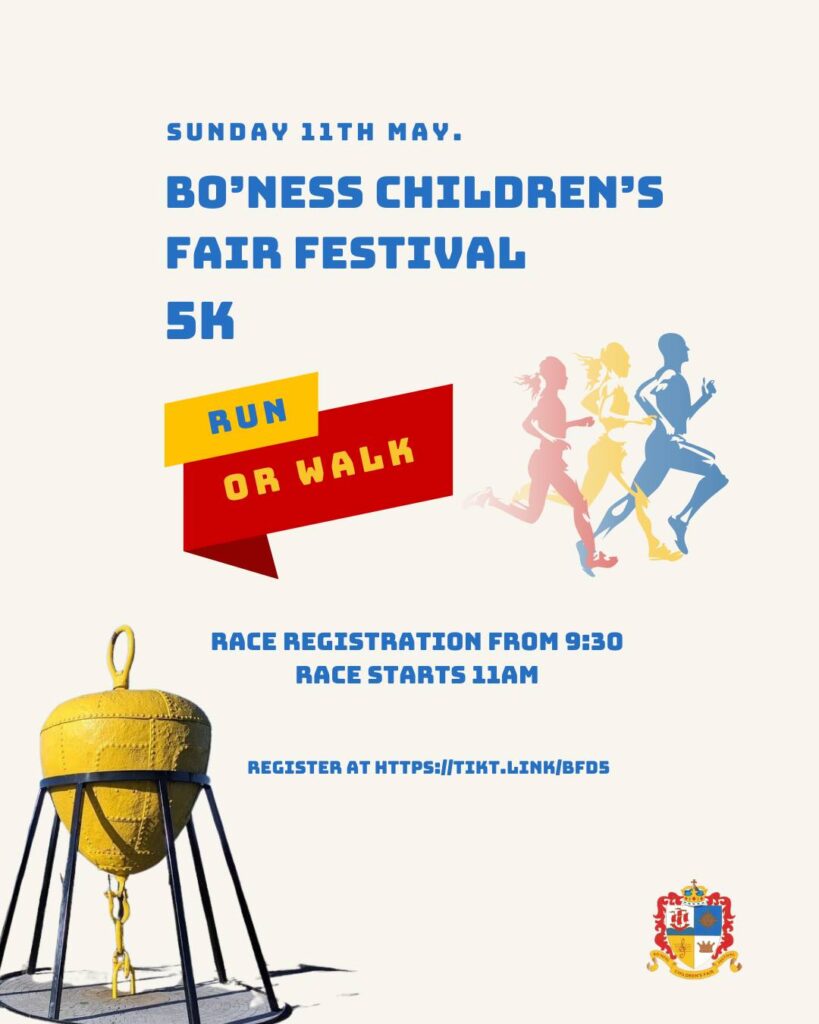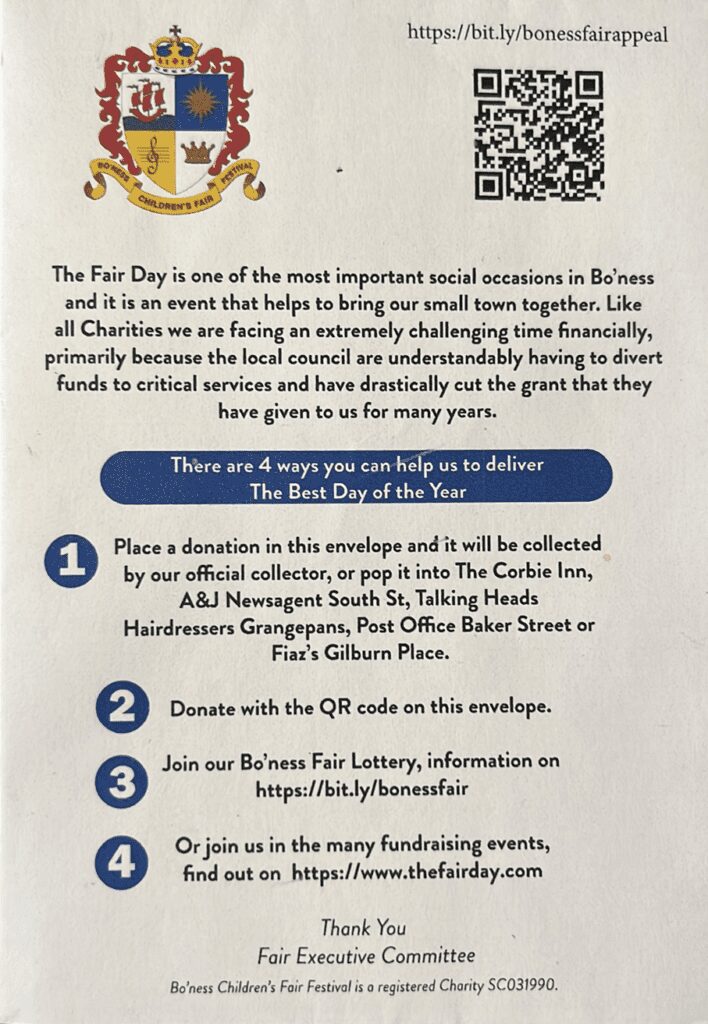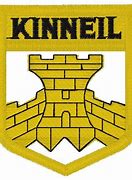Bo’ness Fair was 13 years old in 1910 and during that 13 years, the children’s day had gone from strength to strength. Slow the event was gathering credibility and character. But 1910 was to prove a difficult year for the organisers. Unrest amongst the woodyard workers was simmering and talk of strike was in the offing.
In a community which relied on coal mining and related industries, a strike would seriously affect the economy of the town and as long hot summer began thoughts of an expensive Fair began to worry everyone involved.
Workers meetings were being held almost nightly and the militant attitude was reflected on the children.
Headmaster at Kinneil School at that time was Mr Angus Livingston, an astere angular man with his skin stretched thinly over his bony frame. His dedication to teaching was renowned, and equally his interest in the principles of a young Socialist party were legend.
The spark which exploded the industrial flashpoint came when the employers introduced a reduction of sixpence in the wages.
Night meetings were called and one of the main speakers opposing what he felt was a crippling imposition on workers who were already living on the breadline was Angus Livingston.
The result of these rowdy gatherings was a strike which attracted the attention of the Houses of Parliament.
While the whole of Bo’ness seethed with outbreaks of violence and heated arguments, there was a growing worry about the Fair. Young pupils played truant to sit on the sidelines watching the mounting tension.
Angus Livingston, the teacher and headmaster, came down hard on any boy bold enough to take the odd afternoon off.
His discipline was well known, he advised his pupils that should they become involved in anyway they would not be allowed to take part in the Fair.
As the days passed and the situation in the woodyards became tension filled, violence erupted over the period of a week when an attempt was made to import labour from Glasgow disembarking over 100 men at Kinneil Station.
Fighting broke out in a number of areas which had a great attraction for school children. The trains arrived early in the morning which meant that children were out of their beds to see what was going on. The 9 a.m. start to school was largely ignored in the excitement, this being borne out by the many empty desks at Kinneil School.
Knowing full well what the reason was, Angus Livingston donned his black hat and stroke off to round-up the truants.
At Furnace Yard he spotted three of his pupils standing on a wall. As soon as they saw him they scurried up the hill towards the school. Marching on from there, he came across another two, this time the notorious Sneddon brothers whose attendance at school in normal times was not all that could be desired.
Noting the names, on he went to see young Agnes Black helping serve cups of tea to strikers. However noble her task was, she should have been at school and her name went into the book.
Turning a corner at the Snab Rows he came face with the over-sized 12 – year-old Rab Robertson. Clutching him by his ear, Angus marched him up Castleloan Brae to face the agony of a cane beating across his buttocks.
Late-comers on arrival at school were sent to stand in the queue outside the headmaster’s door to await the fearful swish of the cane.
Around lunch-time a tired but righteous headmaster assembled the school in the playground to re-affirm his decision that anyone becoming involved in any way would not be allowed to attend the Fair. He went on to say that any pupil found near to the foreshore battles would have to face punishment at his hand.
After the happenings of that morning when many boys and a number of girls had firsthand knowledge of Mr Livingston’s wrath, the message was fully understood.
The battles quietened and life began to return to normal. The Fair day drew nearer and nearer, Many of those punished for disobedience began to wonder of the unbending domini would keep to his word and deny them the thrill of walking in the Fair.
Strict disciplinarian that he was, Angus Livingston also had a heart. His threat was never carried out, and the Fair, although a little subdued, went off with Kinneil School fully represented.
When the battle of Slaghill is spoken about in Bo’ness, little reference is made to the battle of Kinneil School with Angus Livingston acting as a whole army supporting the cause of learning and discipline.
While respecting his commitment as a headmaster he had the task of producing a Fair Queen that year.
The pupils elected Agnes Adams on that occasion. And with the battle over wages and the strikes which were going on, willing workers who would have worked around the clock erecting arches and the like had their thoughts diverted elsewhere.
With most pupils’ fathers on strike there was little or no money to produce the standard of Fair expected of them – or so people thought.
To compensate for this, Angus Livingston began to marshall the talents of the parents and the result was a Fair blest with excellent weather which brought out the colours promoting all the glamour that one could wish.
Agnes Adam was a worried wee lassie wondering if she would ever be crowned Queen of Bo’ness. She was and thanks were as much due to Angus Livingston as to anyone else.
JOHN McLAREN






